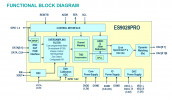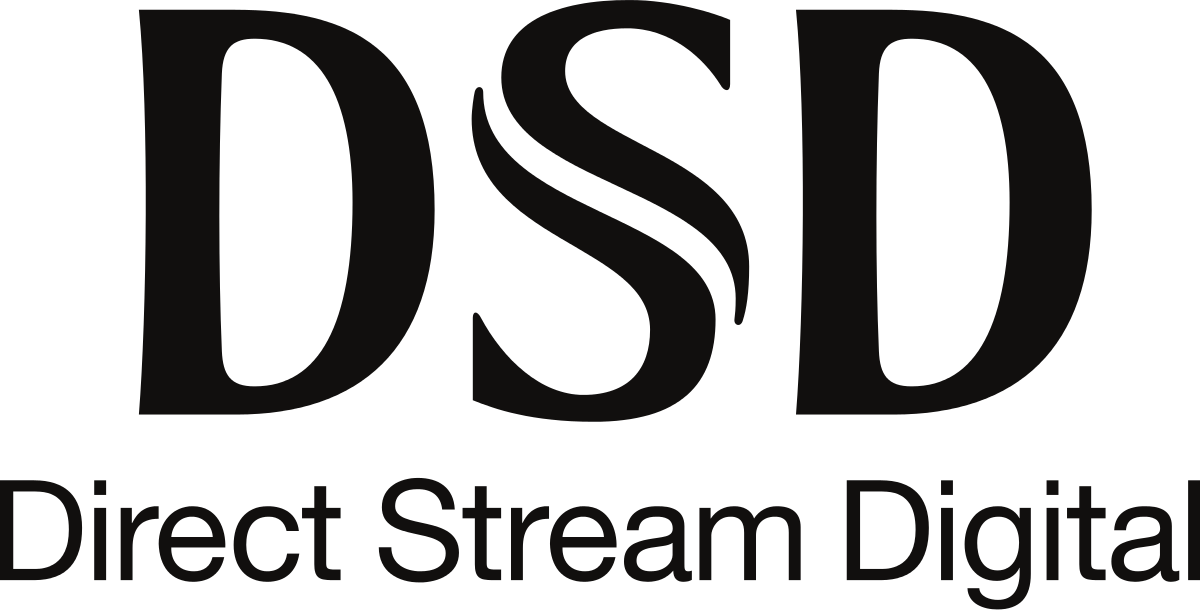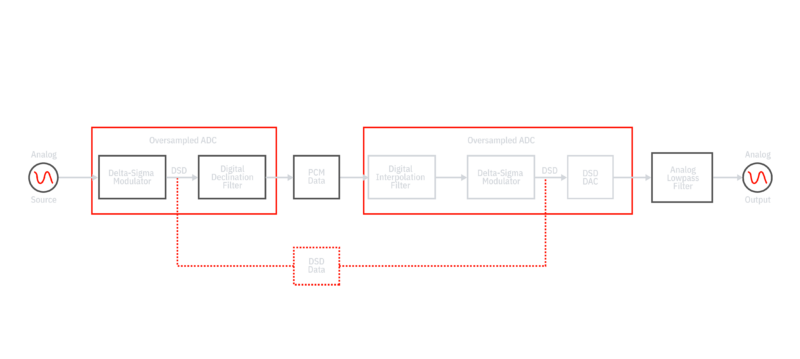-
WANTED: Happy members who like to discuss audio and other topics related to our interest. Desire to learn and share knowledge of science required. There are many reviews of audio hardware and expert members to help answer your questions. Click here to have your audio equipment measured for free!
- Forums
- Audio, Audio, Audio!
- DACs, Streamers, Servers, Players, Audio Interface
- Digital To Analog (DAC) Reviews and Discussion
You are using an out of date browser. It may not display this or other websites correctly.
You should upgrade or use an alternative browser.
You should upgrade or use an alternative browser.
SMSL D-6s Balanced DAC Review
- Thread starter amirm
- Start date
PyramidElectric
Active Member
- Joined
- Mar 17, 2018
- Messages
- 132
- Likes
- 173
You can actually turn the display off, i wonder what that would do to both yours and Amir's tests....
Would a DAC like this be sufficient to go from Wiim pro into this, and then directly into my amp through the balanced outputs? I read a few pages back where it seems someone was getting a loud popping noise. I'd like to have a setup where I don't need to run through my old Marantz receiver since it doesn't have passthrough ability. If this DAC isn't a good choice for that, then any suggestions would be appreciated.
nanook
Active Member
There was an issue that was not finally tracked down.
I will give the combination WIIM Pro -> D-6s -> active speakers a try the next days and will report back.
This is my target setup, I will however not turn up the volume at the speakers more than necessary for normal hearing level because I'd like to stay within reasonable attenuation with the digital volume control.
I will mainly be using Spotify as input for now.
I will give the combination WIIM Pro -> D-6s -> active speakers a try the next days and will report back.
This is my target setup, I will however not turn up the volume at the speakers more than necessary for normal hearing level because I'd like to stay within reasonable attenuation with the digital volume control.
I will mainly be using Spotify as input for now.
nanook
Active Member
@Feesh : I have a WIIM Pro connected to a SMSL D-6s meanwhile. Connection is Toslink.Tried both XLR and RCA - both pop.
Just got the 2nd unit, also has the exact same pop. The pop can occur anytime the display switches to (---), which happens mostly during bitrate switching - it happens 80% of the time. Locking bitrate to 44khz the pop obviously vanishes.
Using Tidal via my PC over USB eliminates the pop completely on the 2nd unit.
Will test using a new optical cable and WiiM Pro... hopefully that combination works better.
Since I mainly use Spotify (my wife's preference - I might actually opt for Tidal) I cannot comment on sample-rate changes.
BUT: I came across a menu item in the WIIM home app (see screenshot). It seems, the WIIM firmware allows to set a latency when switching the sample-rate. The default was 0ms as far as I remember. I have set it to 1000ms (maybe 100ms would be ok. as well - I've not played with this setting), just because I thought 0ms might cause an issue.
-> You may want to try to configure a latency and see if this eventually solves your pop noise issue
Attachments
Have already tried using the delay while doing all of my testing (up to and even more than 1000ms) and it did not fix the pop.@Feesh : I have a WIIM Pro connected to a SMSL D-6s meanwhile. Connection is Toslink.
Since I mainly use Spotify (my wife's preference - I might actually opt for Tidal) I cannot comment on sample-rate changes.
BUT: I came across a menu item in the WIIM home app (see screenshot). It seems, the WIIM firmware allows to set a latency when switching the sample-rate. The default was 0ms as far as I remember. I have set it to 1000ms (maybe 100ms would be ok. as well - I've not played with this setting), just because I thought 0ms might cause an issue.
-> You may want to try to configure a latency and see if this eventually solves your pop noise issue
Having gone through 3 different D-6s and one DO300 unit, all of them exhibited the same pop on my system (as stated before only my old Sanskrit 10th MKII did not pop at any point).
I have decided to keep the third D-6s and live with the minor annoyance for now (while the amp is at listening volume the pop is not that loud - but mostly still audible from my listening position), will see what happens down the line when I buy my next amp.
The D-6s just sounds too good and is too cheap to pass on at the moment.
Thanks for your time and effort!
Switching from XLR to RCA did not have any positive effect, both connections exhibited the pop.Feesh, am I reading your test write-up of February 15 correctly, and all cases of D6-s pop are via the XLR outputs? No cases of a pop when using the RCA outputs? Thanks.
nanook
Active Member
The RCA output indeed just sums up (precisely speaking subtracts) the XLR output. If the XLR 'pops' the RCA will 'pop' too.Switching from XLR to RCA did not have any positive effect
The RCA outputs do have their own muting switch, but I suspect all of the outputs get muted with the same signal.
I'm actually wondering, why SMSL missed the opportunity to mute XLR and RCA separately. The Topping E50 e.g. does allow to activate RCA or XLR or both, which is a nice feature if you have the speakers connected to XLR and the headphone amp to RCA.
The DO300 has an option to output XLR or RCA seperately, or both at the same time.The RCA output indeed just sums up (precisely speaking subtracts) the XLR output. If the XLR 'pops' the RCA will 'pop' too.
The RCA outputs do have their own muting switch, but I suspect all of the outputs get muted with the same signal.
I'm actually wondering, why SMSL missed the opportunity to mute XLR and RCA separately. The Topping E50 e.g. does allow to activate RCA or XLR or both, which is a nice feature if you have the speakers connected to XLR and the headphone amp to RCA.
Guess it has all to do with market segmentation.
staticV3
Master Contributor
- Joined
- Aug 29, 2019
- Messages
- 8,011
- Likes
- 12,852
DSD Direct ≠ Native DSD.Hi PhnomPenhPaul,
Get informed first, what you say isn't true.
I have a Topping E70 and this model uses the Sabre ES9028 Pro chip and transmits in direct DSD
DSD Direct refers to some DAC chips' ability to bypass the oversampling filter and ∆Σ Modulator for DSD audio, like what you can see here for the AK4493S:

As you can see in this block diagram, the ES9028Pro is not capable of DSD Direct:

nanook
Active Member
Thanks, very nice visualization. And I think people are not aware of the fact that DSD Direct ≠ Native DSD.
Native DSD just takes the bitstream and applies a lowpass filter only. Very minimalistic.
ESS chips are capable to process a DSD stream as well, but they need conversions ahead of the multibit SD-converter.
Native DSD just takes the bitstream and applies a lowpass filter only. Very minimalistic.
ESS chips are capable to process a DSD stream as well, but they need conversions ahead of the multibit SD-converter.
Skelethor
Member
- Joined
- Nov 11, 2023
- Messages
- 12
- Likes
- 3
Ok my mistake.DSD Direct ≠ Native DSD.
DSD Direct refers to some DAC chips' ability to bypass the oversampling filter and ∆Σ Modulator for DSD audio, like what you can see here for the AK4493S:
View attachment 360832
As you can see in this block diagram, the ES9028Pro is not capable of DSD Direct:
View attachment 360833
My apologies.
Thank you staticV3
sunjam
Active Member
- Joined
- Mar 19, 2024
- Messages
- 190
- Likes
- 47
I believe that is "DSD Direct".Native DSD just takes the bitstream and applies a lowpass filter only. Very minimalistic.
These terms are very confusing. I bet it is because of DoP
Last edited:
nanook
Active Member
It is indeed very confusing, especially the wording companies/ marketing use. As far as I understand Native DSD usually refers to a DSD bitstream "as recorded with a 1-bit SD- AD converter" (i.e. a bitstream that has never been converted to PCM in between).
I just read into the DSD flavors a bit. The main points for me were:
- most of the DSD stuff has been converted to PCM at some stage (and been converted back to DSD) because the native DSD bitstream cannot to be processed
- DoP is just a container, so a real (native) DSD bitstream can be packed into PCM frames and be unpacked without loss or signal processing
- An elaborate ABX double-blind comparative study conducted at the Erich Thienhaus Institute of the Detmold University of Music in 2004 did not prove that the difference between HiRes PCM (176.4kHz/24bit) and DSD was audible.
The best sites I found were these - some of them have commercial interests though:

 en.wikipedia.org
en.wikipedia.org

 digital-audio-systems.com
digital-audio-systems.com
 wiki.jriver.com
wiki.jriver.com
I'm sure, there have been lots of discussions in this forum already ....
I just read into the DSD flavors a bit. The main points for me were:
- most of the DSD stuff has been converted to PCM at some stage (and been converted back to DSD) because the native DSD bitstream cannot to be processed
- DoP is just a container, so a real (native) DSD bitstream can be packed into PCM frames and be unpacked without loss or signal processing
- An elaborate ABX double-blind comparative study conducted at the Erich Thienhaus Institute of the Detmold University of Music in 2004 did not prove that the difference between HiRes PCM (176.4kHz/24bit) and DSD was audible.
The best sites I found were these - some of them have commercial interests though:

Direct Stream Digital - Wikipedia

Article: PCM vs. DSD | digital audio systems
Article: Discussion of the pros and cons of PCM vs. DSD as digital modulation technologies
 digital-audio-systems.com
digital-audio-systems.com
DSD - JRiverWiki
Help with PCM to DSD conversion on the fly in JRiver
Help with PCM to DSD conversion on the fly in JRiver
yabb.jriver.com
I'm sure, there have been lots of discussions in this forum already ....
sunjam
Active Member
- Joined
- Mar 19, 2024
- Messages
- 190
- Likes
- 47
My understanding of these terms are (in the companies' marketing sense)
1. Native DSD support: means DAC can take DSD data stream natively (i.e. raw DSD data stream) for processing. It has nothing to do with how the DAC handles the DSD data stream internally. This usually requires ASIO driver for Windows and Mac does not support it
2. DoP (aka DSD over PCM) support: means DSD data stream is packed in PCM packets for sending to the DAC (as all the DACs support PCM flow). As it requires larger PCM packets for sending the DSD data, it usually supports lower DSD bitrate under DoP. i.e. DACs support DSD512 (DSD Native) may only support DSD256 (DoP). Moreover, I think most people / companies consider DoP as not "DSD Native" (even it can transfer bit perfect DSD data to the DAC). Again, it has nothing to do with how the DAC handles the DSD data stream internally in the D-to-A process. Windows can support it without any driver installed.
3. DSD Direct: means the DAC would by pass all the DAC's internal oversampling / Delta-Sigma modulation / etc and would only use very simple / direct way to convert the 1-bit DSD datastream to final analog signal. It could happen or not with the "Native DSD" or "DoP" flow (i.e. non "Native DSD" flow) depends on if the DAC support this DSD Direct option.
Some chips do not support DSD Direct option at all (e.g. ESS)
Some chips only support DSD Direct (e.g. BB's DSD1793)
Some chips make it optional (e.g. AKM). It depends on the indivdual maker / DAC design
1. Native DSD support: means DAC can take DSD data stream natively (i.e. raw DSD data stream) for processing. It has nothing to do with how the DAC handles the DSD data stream internally. This usually requires ASIO driver for Windows and Mac does not support it
2. DoP (aka DSD over PCM) support: means DSD data stream is packed in PCM packets for sending to the DAC (as all the DACs support PCM flow). As it requires larger PCM packets for sending the DSD data, it usually supports lower DSD bitrate under DoP. i.e. DACs support DSD512 (DSD Native) may only support DSD256 (DoP). Moreover, I think most people / companies consider DoP as not "DSD Native" (even it can transfer bit perfect DSD data to the DAC). Again, it has nothing to do with how the DAC handles the DSD data stream internally in the D-to-A process. Windows can support it without any driver installed.
3. DSD Direct: means the DAC would by pass all the DAC's internal oversampling / Delta-Sigma modulation / etc and would only use very simple / direct way to convert the 1-bit DSD datastream to final analog signal. It could happen or not with the "Native DSD" or "DoP" flow (i.e. non "Native DSD" flow) depends on if the DAC support this DSD Direct option.
Some chips do not support DSD Direct option at all (e.g. ESS)
Some chips only support DSD Direct (e.g. BB's DSD1793)
Some chips make it optional (e.g. AKM). It depends on the indivdual maker / DAC design
Last edited:
Human Bass
Addicted to Fun and Learning
- Joined
- Nov 25, 2018
- Messages
- 683
- Likes
- 697
One thing I love about my D-6s is how well handle jitters. Even in the lowest sensitbivity it never skips with my tv outputting from toslink.
Looking at their webpage, SMSL seem to issue considerably fewer firmware updates to their products than Topping. Either their devices are flawless out of the factory, or...(?)
The number of FW update registrations on the SMSL website is small.Looking at their webpage, SMSL seem to issue considerably fewer firmware updates to their products than Topping. Either their devices are flawless out of the factory, or...(?)
The reason is that FW updates are registered on HP for a certain period of time and then deleted. Also, with SMSL, FW updates themselves are not performed much in the first place. I don't know the reason, but it may be due to SMSL's corporate structure or company policy.
Best price/performance ratio is tempting, but both HW longetivity and aftersale SW support is a question, if it is not "wiser" to pay a bit more.The number of FW update registrations on the SMSL website is small.
The reason is that FW updates are registered on HP for a certain period of time and then deleted. Also, with SMSL, FW updates themselves are not performed much in the first place. I don't know the reason, but it may be due to SMSL's corporate structure or company policy.
Surely the DAC is not a network player, but still. On the positive side, both their network players have latest FWs listed. I'd be curious how many years is the typical software support span for them.
Similar threads
- Poll
- Replies
- 257
- Views
- 68K
- Replies
- 8
- Views
- 2K
- Replies
- 16
- Views
- 1K
- Poll
- Replies
- 303
- Views
- 45K
- Poll
- Replies
- 268
- Views
- 59K

